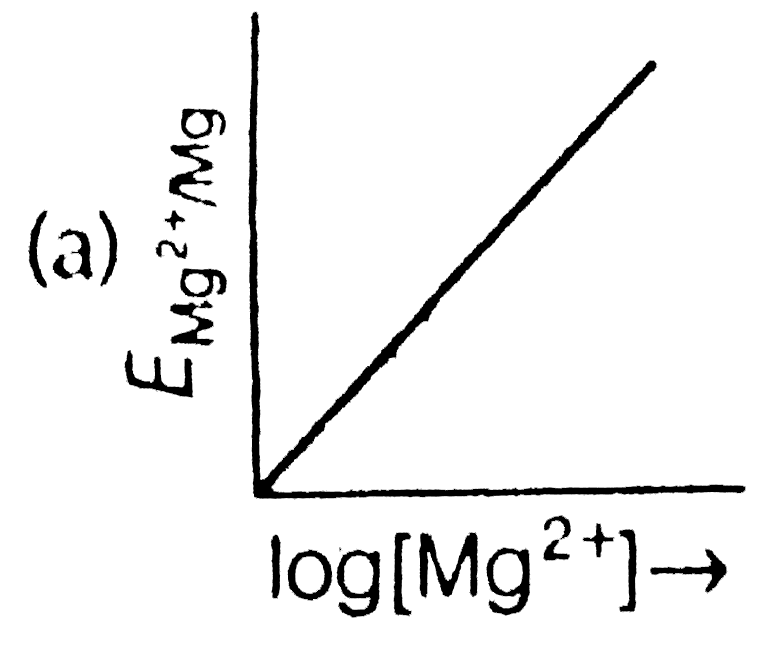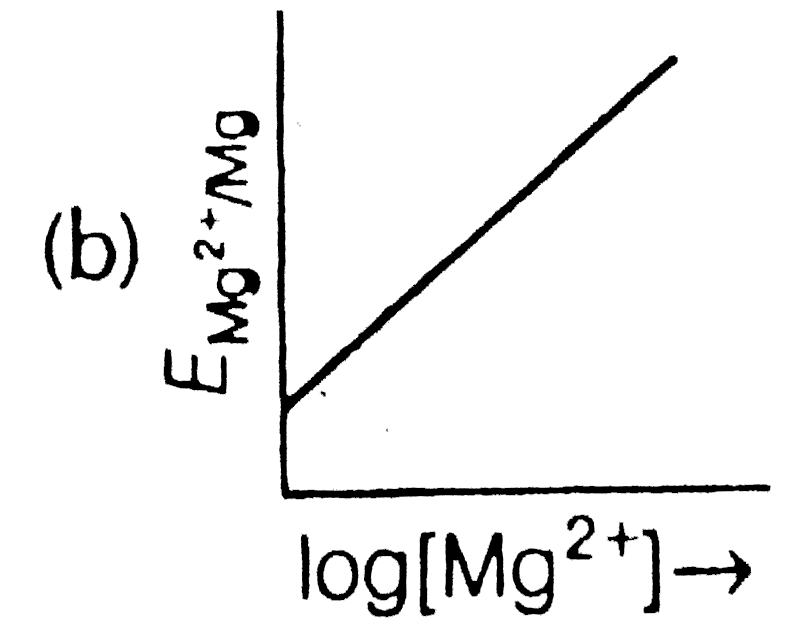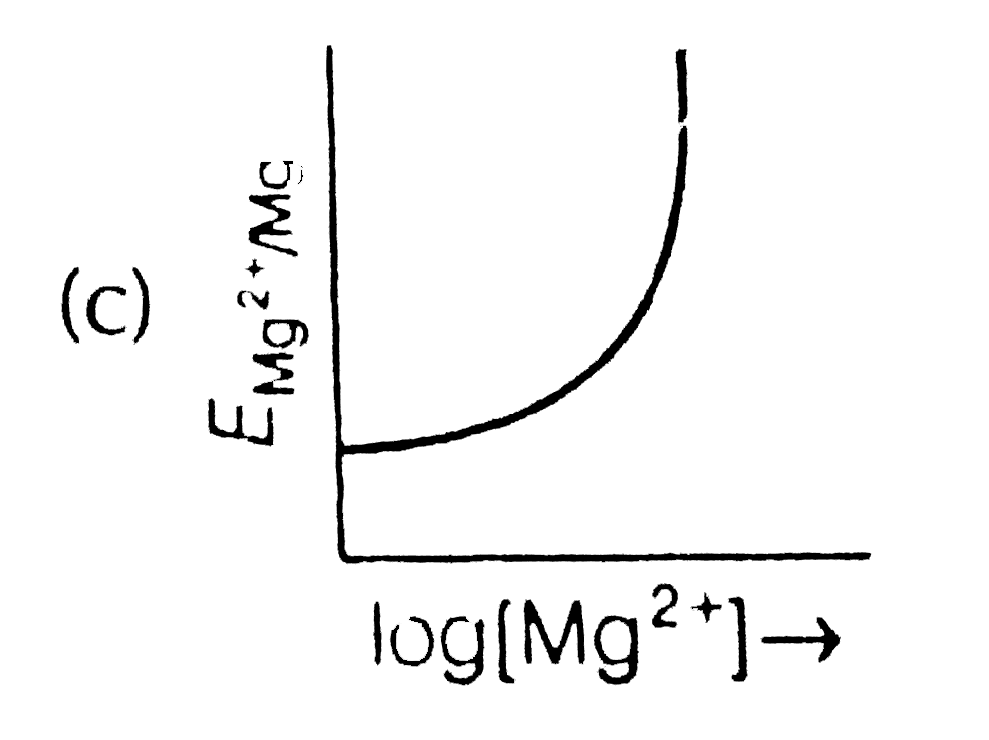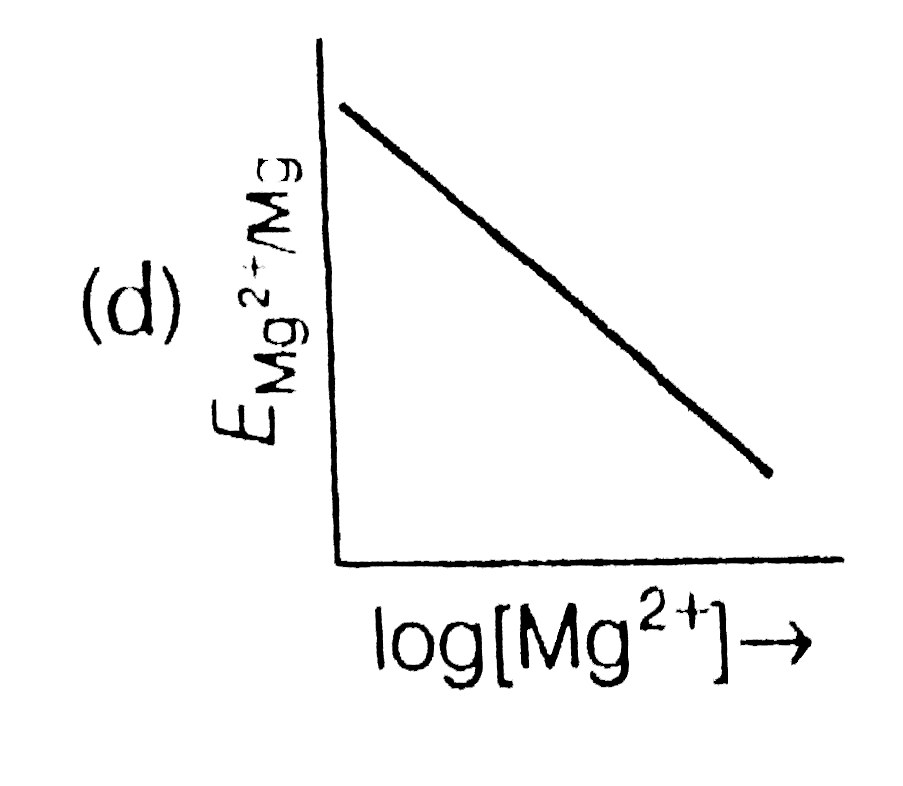Calculate the reduction potential for the following half cells at 25∘C
Mg∣Mg2+(1×10−4M),E∘Mg,Mg2+=+2.36VSolution in Malayalam
Mg2++2e↔Mg(reduction)
E∘Mg2+,Mg=EMg2+,Mg+0.05912log(1×10−4).......[see example]
=−2.36−4×0.05912=−2.4782V
Topper's Solved these Questions
- ELECTROMOTIVE FORCE BOOK - BODY BOOKS PUBLICATIONCHAPTER - ELECTROMOTIVE FORCE EXERCISE - PROBLEMS
50 Videos
- ELECTROMOTIVE FORCE BOOK - BODY BOOKS PUBLICATIONCHAPTER - ELECTROMOTIVE FORCE EXERCISE - EXERCISE
25 Videos
- ELECTROCHEMISTRYBOOK - BODY BOOKS PUBLICATIONCHAPTER - ELECTROCHEMISTRYEXERCISE - EXAMPLES
134 Videos
- General Principles and Processes of Isolation of ElementsBOOK - BODY BOOKS PUBLICATIONCHAPTER - General Principles and Processes of Isolation of ElementsEXERCISE - Example
108 Videos
Similar Questions
Calculate the reduction potentials for the following half cells:
Ag∣Ag+(10−5M),E∘Ag+,Ag=0.80V
View SolutionIs 1MH+ solution under hydrogen gas at 1 atm capable of oxidising Ag metal in the presence of 1MAg+
(a) yes
(b) No
View SolutionSalt bridge Is used because it_________.
View SolutionThe scientific and technological process used for isolation of the metal from its ores is known as metallurgy. Name the method used for removing gangue from sulphide ores.
View SolutionThe standard reduction potential for Mg^(2+)//Mg is -2.37 V and for Cu^(2+)//Cu is 0.337 . The E_("cell")^(@) for the following reaction is Mg+Cu^(2+) to Mg^(2+)+Cu
View SolutionThe standard reduction potential for Mg2+/Mg is 2.37 V and for Cu2+/Cu is 0.337 The E∘cell for the following reaction Mg+Cu2+→Mg2++Cu is
View SolutionCalculate the electrical work (at standard state) obtained from galvanic cell : Mg∣∣Mg2+(aq)∣∣∣∣Ag+(aq)∣∣Ag
Given : E∘Mg2+∣Mg=−2.36VandE∘Ag2+∣Ag=+0.80V
View SolutionElectrode potential of Mg- electrode varies as - E∘Mg2+∣Mg=E∘Mg2+∣Mg−0.0592log.1[Mg2+]. The graph of E∘Mg2+∣Mg vs. log[Mg2+] is -
View SolutionCalculate E_("cell")^(@) of the cell Mg|Mg^(2+)||Cu^(+)|Cu Given : E_(Mg^(2+)|Mg)^(@)=-2.37V and E_(Cu^(+)|Cu)^(@)=+0.15V .
View SolutionThe standard reduction potentials of two half cells Al^(3+) (aq) | Al and Mg^(2+)(aq) | Mg are -1.66V and -2.36V respectively. Calculate the standard cell potential. Write the cell reactions also.
View SolutionMg2+/Mg इलेक्ट्रोड विभव क्या है जबकि उसे जो विलयन में डुबोया जाता है उसमें Mg2+ की सान्द्रता (0.01 M है? E0Mg2+/Mg=−2.36V.
View SolutionCalculate the emf and DeltaG of cell reaction for the following cell at 25 °C : Mg(s) | Mg^(2+) (0.001 M) || Cu^(2+) (0.0001 M) + Cu(s) [E_(Mg^(2+)//Mg)]^(@) = -2.37 V, E_(Cu^(2+)//Cu)^(@) =+0.34 V and 1F = 96500C mol^(-1)
View SolutionElectrode potential for Mg electrode varies according to the equation
EMg2+∣Mg=EϴMg2+∣Mg−0.0592log1[Mg2+]
The graph of EMg2+∣Mgvslog[Mg2+] is
(a)
(b)
(c)
(d)
View SolutionE∘ Values of the half cells Mg2+/Mg and Cl2/Cl− are respectively -2.36V and +1.36 V. The E∘ vlaue of the cell Mg/Mg2+//Cl2/Cl− is
View SolutionCalculate emf and ∂G for the following cell at 298 K :
Mg(s)∣∣Mg+2(10−3M)∣∣∣∣Cu+2(10−4M)∣∣Cu(s)
given E∘(Mg+2)/(Mg)=−2.36V and E∘(Cu+2)/(Cu)=+0.34V
(1F=96500 C mol−1)
View Solution
